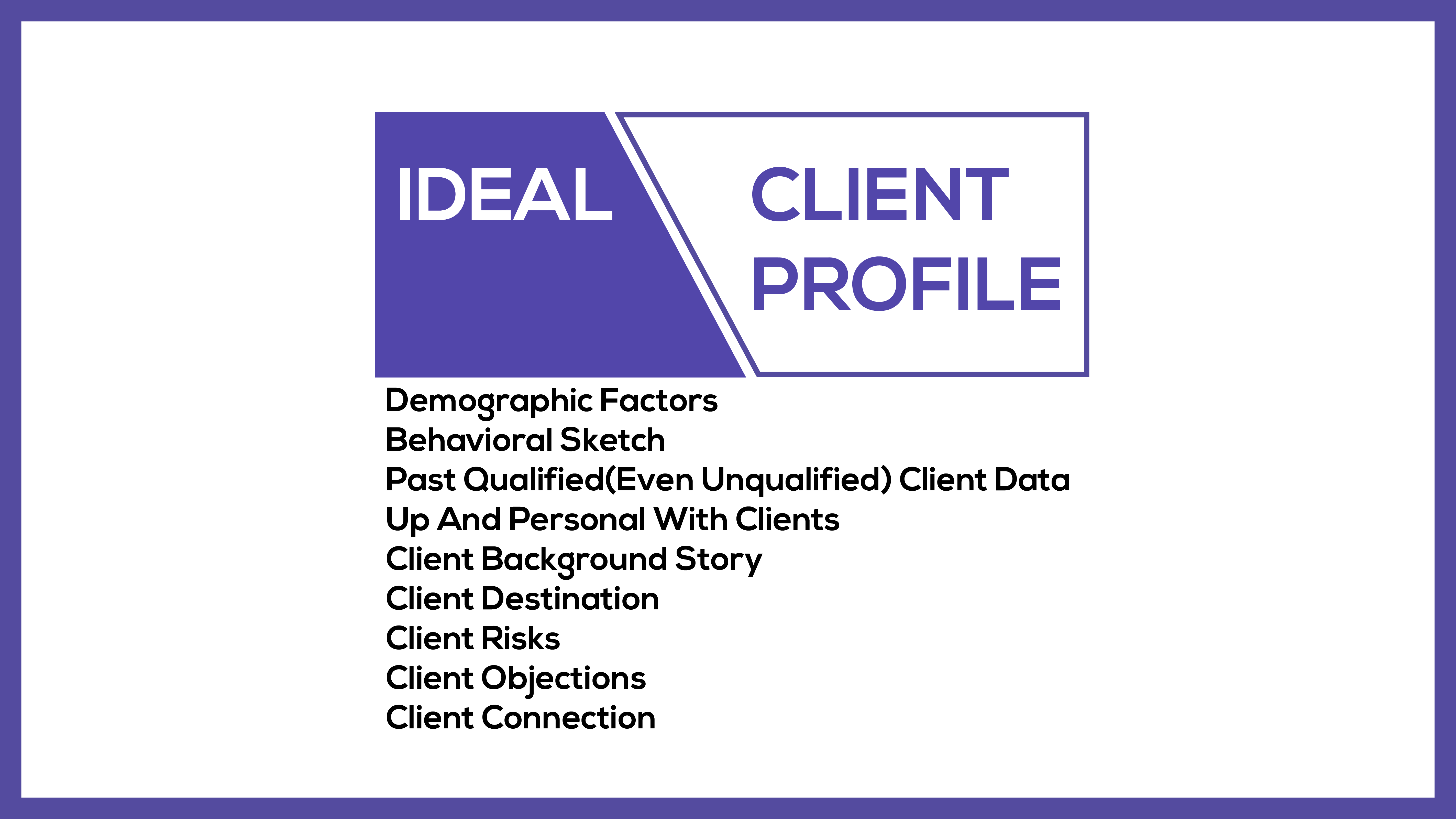
What separates a great sales team from a good sales team? It’s the type of client profile they choose to work with. The term client profile isn’t an uncommon one in the sales-sphere. It forms the basis for any type of product or service which is being sold. Many sales teams have a hard time forming the right one. What is it that makes certain profiles stand out more than the rest of the them? Quite a lot of things, in fact, and this article tells you what your team might overlook.
Why Invest In An Ideal Client Profile?
A client profile is a blueprint for the type of clients anyone wishes to attract. Current scenarios in the market dictate more buying options. How does a company mark its brand in the face of the market when countless other companies already exist? The solution is a differentiated ideal client profile. A differentiated profile narrows down clients based on different factors other than demographics. It brings more clarity in content, keyword research, content mapping, and client personalization.
Best marketing strategies are specific and differentiated, which make use of ideal profiles. The perfect client is one who is as energetic about working with you as you are with them. They understand the value of your organization and what you have to offer. They are a perfect fit based on data and research, and not on a wish-list your product needs.
Here are 9 ways you can build a differentiated client profile.
1. Demographic Factors
These factors form the chassis of the profile. Demographic research involves digging up client statistics based on attributes like age, gender, qualification, income, location, occupation, education level, to name a few. This process serves as a filter, and narrows down potential leads.
2. Behavioral Sketch
Behavioral analysis is the process of understanding and categorizing different people based on their reactions in a particular situation. In this case, a person’s buying patterns are of value. A behavioral sketch of a person is a map of psychological information which shows how, when, and why they buy.
A few key areas to research on are:
- Common websites they visit.
- Specific emails they read.
- How does price, quality, quantity affect their choices?
- Real-time feedback on products they use.
3. Past Qualified(Even Unqualified) Client Data
Taking a trip down the memory lane helps in acquiring client details which are of great value. Everything related to these prior clients serves a purpose in creating differentiated profiles. The more the history, better is the client profile. Many believe that losses of the past have no significance. They are mistaken. Losses offer more insight into what went wrong in attracting leads for your product. It points to things which are of low value.

4. Up And Personal With Clients
Interviews with clients will give you exclusive details to craft a resourceful profile. A personal interview brings out minute details that only the client possesses. It is difficult to dig these minute details from other sources. The client has both qualitative and quantitative information on your product or service. This information is far more valuable than any other because they come from the user. Also, instead of interviewing one client, making use of a survey tool will save time and energy.
5. Client Background Story
A resonating background story is the best way to a client’s heart(or should I say money?). Period. The motive is to know where they are in their buyer’s journey and what led them there. Knowing this will bring more lucidity to the type of challenges they are facing. When you hit the mark, and the client feels that you ‘get’ them, it’s much easier to close the deal.
6. Client Destination
Knowing where the client is heading is crucial to selling your product. A client is more inclined to buy a product when using it helps them in reaching their goal. A differentiated client profile targets people with same goals and agendas. Not only the unique features but the future benefits must come in the list. Future benefits are rewards for reaching the destination. This makes it clear about where the client is heading.
7. Client Risks
The previous point mentions that one should focus on future benefits. But there is no such thing as a perfect solution. Future risks are inevitable. It is advisable to include potential risks that the client might encounter.
Both positive and negative risks play a huge part in differentiated profiles. Positive risks have a positive impact like having too many clients to deal with. Negative risks hinder sales. By knowing what the clients gain or lose, it becomes easier to seek qualified leads.

8. Client Objections
At some point or another, a potential client will object to buying your product. Only the client himself will know the reasons of not buying. It is your job to find out these reasons or objections that the client could raise, and how best to tackle them in your favor. Doing so will provide emotional stability to your client. Emotional stability is essential to keep the buyer interested in your product.
9. Client Connection
Have you ever wondered how you end up being friends with like minded people? Of course, you have. It always starts with a connection. A sports reference or a common liking for a place. Sales isn’t different than making friends. Marketing strategies should try to first make a connection with the audience. Connecting with the audience on a personal level builds rapport from the beginning. Try looking for an audience with large connection opportunities which will help expand your reach.
The list is inexhaustible. These 9 points should get you started on a list of your own. Play with the points. Add something from your own experience, and make a great differentiated client profile.


